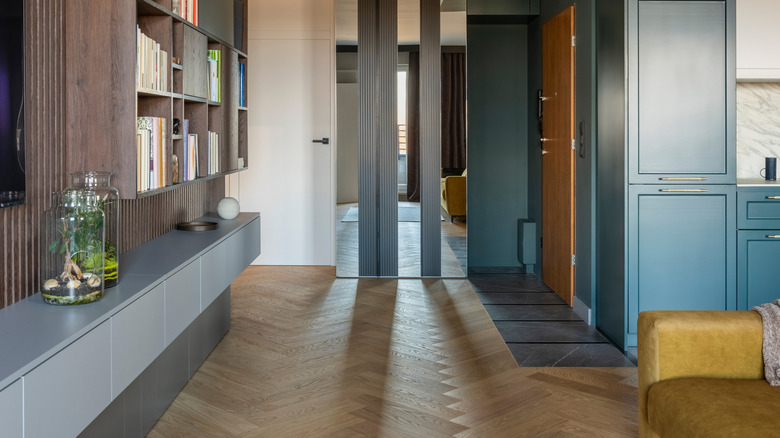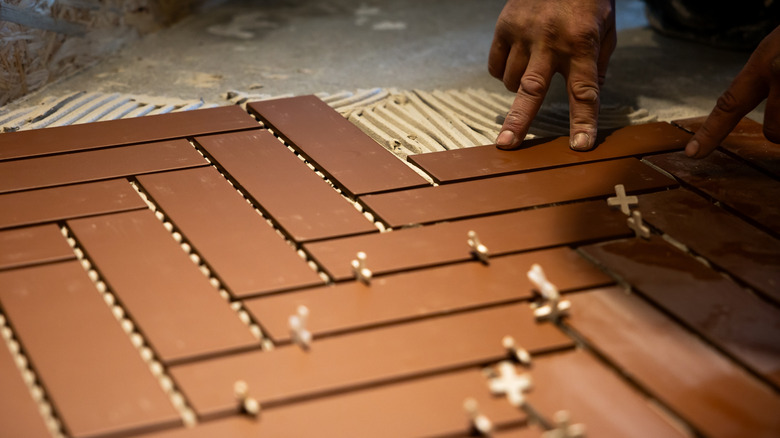The Best Materials For Herringbone Floors (& Ones To Avoid)
Herringbone flooring brings a timeless sophistication to any space, transforming an often-overlooked aspect of your home into a stunning focal point. The traditional zig-zag pattern creates a sense of movement that makes a room feel dynamic and interesting. But with a wide range of materials, it might be hard to decide on the right one for your space. From natural wood and vinyl planks to stone and tile, there is certainly no shortage of ways to make herringbone suit your specific style. Each material brings its own set of benefits and drawbacks, and which you should choose is dependent your needs for your flooring.
The adaptability of herringbone gives it an edge over other flooring patterns, as it provides a bit of structural stability with the added benefit of visual interest. The design thrives in just about any room, including entryways, bathrooms, and kitchens. It can also serve as a stylish statement for an accent wall, kitchen backsplash or shower tiling. But when it comes to flooring, you will have no shortage of options to seamlessly integrate it into your home. Its structural stability makes it the perfect pick for high-traffic areas like mudrooms and kitchens, but the exact durability will, of course, depend on the material you choose. With some careful planning, herringbone can work in any room, but it's best suited for smaller spaces that need a bit of aesthetic appeal. If you want to prioritize longevity in these spaces, herringbone can be an excellent flooring solution that requires minimal maintenance and is sure to hold up with time.
Choosing the right fit
Deciding on the right material for herringbone pattern depends heavily on its intended use. Natural wood is the most popular pick for a herringbone flooring. It comes in a variety of options, ranging from pre-finished to unfinished wood, giving you the opportunity to curate the perfect look for your space. Additionally, it is available in different grains, wood types, and stains. However, as it is natural wood, it is susceptible to warping and staining, especially in areas that are heavily exposed to moisture like bathrooms and kitchens. For those environments, vinyl plank flooring might be right for your space, as it combines the timeless look of natural wood with the durability of synthetic materials. It is a long-lasting option that is completely waterproof, making it an excellent addition to spaces that are prone to spills and moisture.
If wood just doesn't seem to fit the needs of your space, you might want to opt for a natural stone. There are a wide range of options to choose from, including marble, sandstone, and soapstone. Sealed natural stone can be an excellent option for spaces that are exposed to moisture like kitchens, mudrooms, and bathrooms. One thing you need to know about natural stone is that the materials and installation of your floor might come at a higher cost than some other options. It isn't the most DIY friendly, often requiring complex tools to get the right fit. If you want to save money, opt for ceramic tiles that are both cheaper and easier to install. Their uniform shape can help you create a classic look without nearly as much cutting and measuring.

